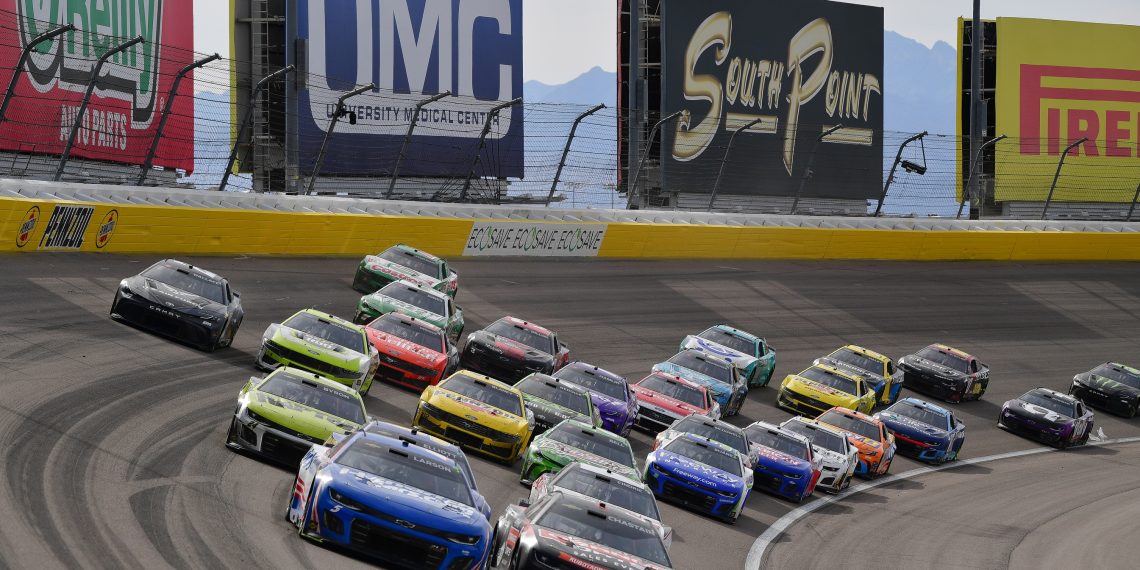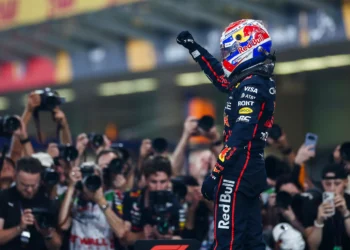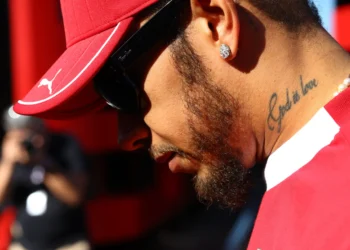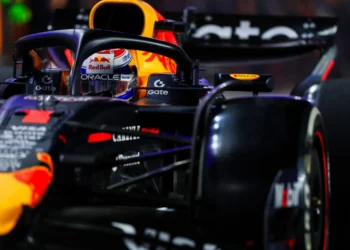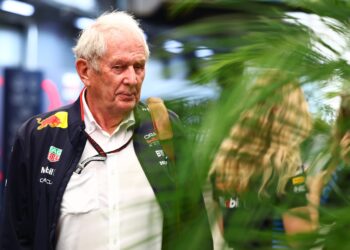NASCAR Triumphs as F1 Struggles to Keep Up: A Weekend of Racing Drama
This past weekend, motorsports enthusiasts were treated to an exhilarating showcase of skill and speed. NASCAR and Formula 1, the titans of racing, delivered a double dose of excitement that left fans buzzing. While Kyle Larson celebrated a monumental victory at Homestead Miami, McLaren dominated the F1 grid in China, reminding us all of the fierce rivalry that exists between these two motorsport giants.
Kyle Larson’s win marked his 30th triumph in the Cup Series, a testament to his enduring prowess on the track. Battling his teammate Alex Bowman to the finish line, Larson expressed immense relief and joy. Meanwhile, in the world of Formula 1, the spotlight was on McLaren, who maintained their grip on the grid in a thrilling race in China.
Despite the thrill of competition, a shadow looms over NASCAR. Jimmie Johnson once highlighted the technological gap between NASCAR and F1, noting the absence of streaming telemetry in stock car racing. This difference has sparked debate among fans, with NASCAR veteran Kenny Wallace candidly stating that F1 is increasingly stealing NASCAR’s spotlight.
The rivalry between NASCAR and F1 is not new. It dates back to when Kyle Busch attempted to lure F1’s Kimi Räikkönen to NASCAR with a $100,000 offer per race, hoping to share the adrenaline rush of stock car racing. Iconic moments, such as the car swap between Jimmie Johnson and Fernando Alonso, have further stitched the narratives of these two worlds together. Even Dale Earnhardt Jr. has acknowledged F1’s Max Verstappen, praising his exceptional talent.
However, recent viewership numbers tell a story of resurgence for NASCAR. Last weekend, NASCAR’s Cup Series at Homestead captured the attention of 2.4 million viewers on FOX, with the Xfinity Series drawing 1.1 million on CW and the Truck Series attracting 900,000 on FOX. In contrast, F1’s Chinese Grand Prix, despite its early air time, managed 820,000 viewers on ESPN—an impressive increase from the 260,000 pre-pandemic audience in 2019.
Comparing the numbers to the previous weekend, NASCAR’s Phoenix race on FS1 reached a four-year cable high of 2.82 million viewers, although it saw a 30% drop from the previous year’s broadcast. Meanwhile, F1’s Australian Grand Prix set a record with 1.1 million viewers, although it dipped slightly by 1% compared to the prior year’s Bahrain opener.
IndyCar, however, faced a tough challenge with only 704,000 viewers at The Thermal Club, a significant drop from St. Pete’s 1.4 million and last year’s 788,000. The concurrent timing with NASCAR races drew criticism from fans and commentators alike, with Parker Kligerman calling for better scheduling to avoid clashes that are detrimental to viewership.
Despite broadcasting challenges, including disruptive commercial breaks, NASCAR’s recent performance suggests a potential turnaround in its viewership decline. The no-ad approach offered by ESPN for F1 has not deterred NASCAR’s resurgence, signaling brighter days ahead for the sport.
In an intriguing twist, F1’s Liam Lawson, after facing setbacks in Formula 1, ventured into a NASCAR simulator at Ford’s Performance Technical Center in North Carolina. Enthralled by the experience, Lawson expressed a keen interest in racing in the United States, potentially signifying a future crossover between the two racing worlds. His performance in the simulator impressed NASCAR’s Noah Gragson, hinting at Lawson’s potential to make a successful transition to stock car racing.
As fans eagerly anticipate more thrilling encounters between NASCAR and F1, the stage is set for an exciting future where these two motorsport titans continue to challenge and inspire each other on the global stage.

